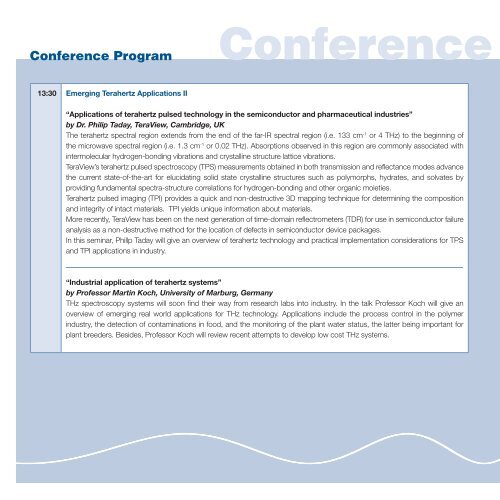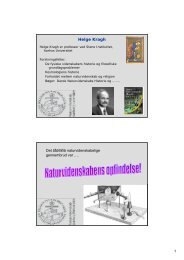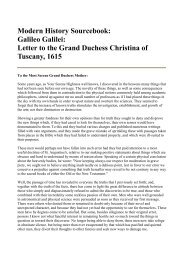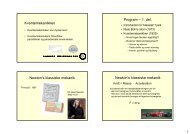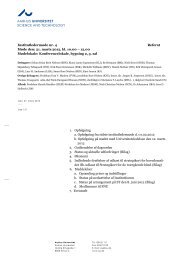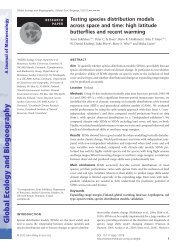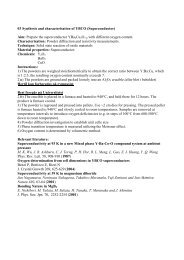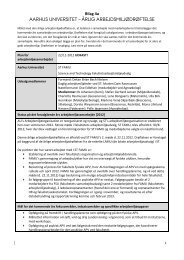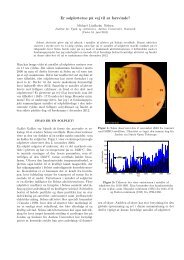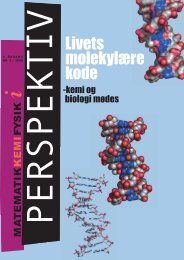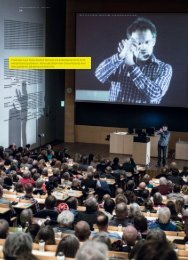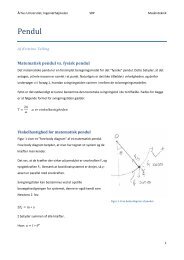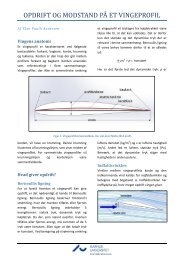OPTICAL TERAHERTZ SCIENCE AND TECHNOLOGY
OPTICAL TERAHERTZ SCIENCE AND TECHNOLOGY
OPTICAL TERAHERTZ SCIENCE AND TECHNOLOGY
You also want an ePaper? Increase the reach of your titles
YUMPU automatically turns print PDFs into web optimized ePapers that Google loves.
Conference Program<br />
Conference Program<br />
13:30 Emerging Terahertz Applications II<br />
“Applications of terahertz pulsed technology in the semiconductor and pharmaceutical industries”<br />
by Dr. Philip Taday, TeraView, Cambridge, UK<br />
The terahertz spectral region extends from the end of the far-IR spectral region (i.e. 133 cm -1 or 4 THz) to the beginning of<br />
the microwave spectral region (i.e. 1.3 cm -1 or 0.02 THz). Absorptions observed in this region are commonly associated with<br />
intermolecular hydrogen-bonding vibrations and crystalline structure lattice vibrations.<br />
TeraView’s terahertz pulsed spectroscopy (TPS) measurements obtained in both transmission and reflectance modes advance<br />
the current state-of-the-art for elucidating solid state crystalline structures such as polymorphs, hydrates, and solvates by<br />
providing fundamental spectra-structure correlations for hydrogen-bonding and other organic moieties.<br />
Terahertz pulsed imaging (TPI) provides a quick and non-destructive 3D mapping technique for determining the composition<br />
and integrity of intact materials. TPI yields unique information about materials.<br />
More recently, TeraView has been on the next generation of time-domain reflectrometers (TDR) for use in semiconductor failure<br />
analysis as a non-destructive method for the location of defects in semiconductor device packages.<br />
In this seminar, Phillp Taday will give an overview of terahertz technology and practical implementation considerations for TPS<br />
and TPI applications in industry.<br />
“Terahertz wireless communications”<br />
by Dr.-ing. Thomas Kleine-Ostmann, Physikalisch-Technische Bundesanstalt, Germany<br />
The increased need of unoccupied and unregulated bandwidth for future wireless short-range communication systems<br />
will require the extension of carrier frequencies to values of 300 GHz and beyond in the lower THz range. The Terahertz<br />
Communications Lab is a joint activity of three research groups at the Technical University of Braunschweig and one at the<br />
Physikalisch-Technische Bundesanstalt, the German National Metrology Institute, also in Braunschweig. It aims to do research<br />
on system aspects, technology, propagation and channel modelling at sub-mm wavelengths. As part of this cooperation, the<br />
Physikalisch-Technische Bundesanstalt covers metrological aspects within this frequency range. A 300 GHz transmission<br />
system designed for THz communication channel modelling and propagation studies has been set up and characterized with<br />
regard to link budget and noise. It consists of autarkic transmitter and detector units based on Schottky diode mixer technology.<br />
For demonstration, analogue and digital video signals have been transmitted over distances of up to 52 m. First channel<br />
measurements have been performed in an office environment. This talk gives an overview of recent and envisaged research<br />
activities within the Terahertz Communications Lab.<br />
15:00 Coffee/tea break<br />
“Industrial application of terahertz systems”<br />
by Professor Martin Koch, University of Marburg, Germany<br />
THz spectroscopy systems will soon find their way from research labs into industry. In the talk Professor Koch will give an<br />
overview of emerging real world applications for THz technology. Applications include the process control in the polymer<br />
industry, the detection of contaminations in food, and the monitoring of the plant water status, the latter being important for<br />
plant breeders. Besides, Professor Koch will review recent attempts to develop low cost THz systems.<br />
15:15 Moderated debate/panel discussion<br />
16:00 Closing remarks<br />
Moderator<br />
To facilitate an active discussion between the speakers of the conference and<br />
the participants, the sessions will be moderated by Professor Søren Rud Keiding,<br />
Department of Chemistry, Aarhus University.


